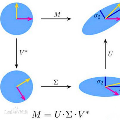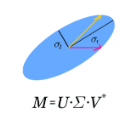Low-rank approximation of images via singular value decomposition is well-received in the era of big data. However, singular value decomposition (SVD) is only for order-two data, i.e., matrices. It is necessary to flatten a higher order input into a matrix or break it into a series of order-two slices to tackle higher order data such as multispectral images and videos with the SVD. Higher order singular value decomposition (HOSVD) extends the SVD and can approximate higher order data using sums of a few rank-one components. We consider the problem of generalizing HOSVD over a finite dimensional commutative algebra. This algebra, referred to as a t-algebra, generalizes the field of complex numbers. The elements of the algebra, called t-scalars, are fix-sized arrays of complex numbers. One can generalize matrices and tensors over t-scalars and then extend many canonical matrix and tensor algorithms, including HOSVD, to obtain higher-performance versions. The generalization of HOSVD is called THOSVD. Its performance of approximating multi-way data can be further improved by an alternating algorithm. THOSVD also unifies a wide range of principal component analysis algorithms. To exploit the potential of generalized algorithms using t-scalars for approximating images, we use a pixel neighborhood strategy to convert each pixel to "deeper-order" t-scalar. Experiments on publicly available images show that the generalized algorithm over t-scalars, namely THOSVD, compares favorably with its canonical counterparts.
翻译:通过单值分解变异的图像低端近似值在大数据时代是收到的。 然而, 单值分解( SVD) 仅用于顺序二数据, 也就是说, 矩阵。 需要将更高顺序输入的输入平整到矩阵中, 或将其分解成一系列顺序二切片, 以便通过 SVD 处理多光谱图像和视频等更高顺序数据。 高排序单值分解( HOSVD) 扩展SVVD, 并使用几个一级组件的数值来近似更高顺序数据。 我们考虑过一级数据时, 单值分解( SVDD) 仅针对一定的二级数据, 单值分解( SVVD) 仅针对一定的二级数据, 将HOS DVD 通用变异位变异等图像普遍化, 也可以通过高级变现的版本来显示其高级变异性数据。




